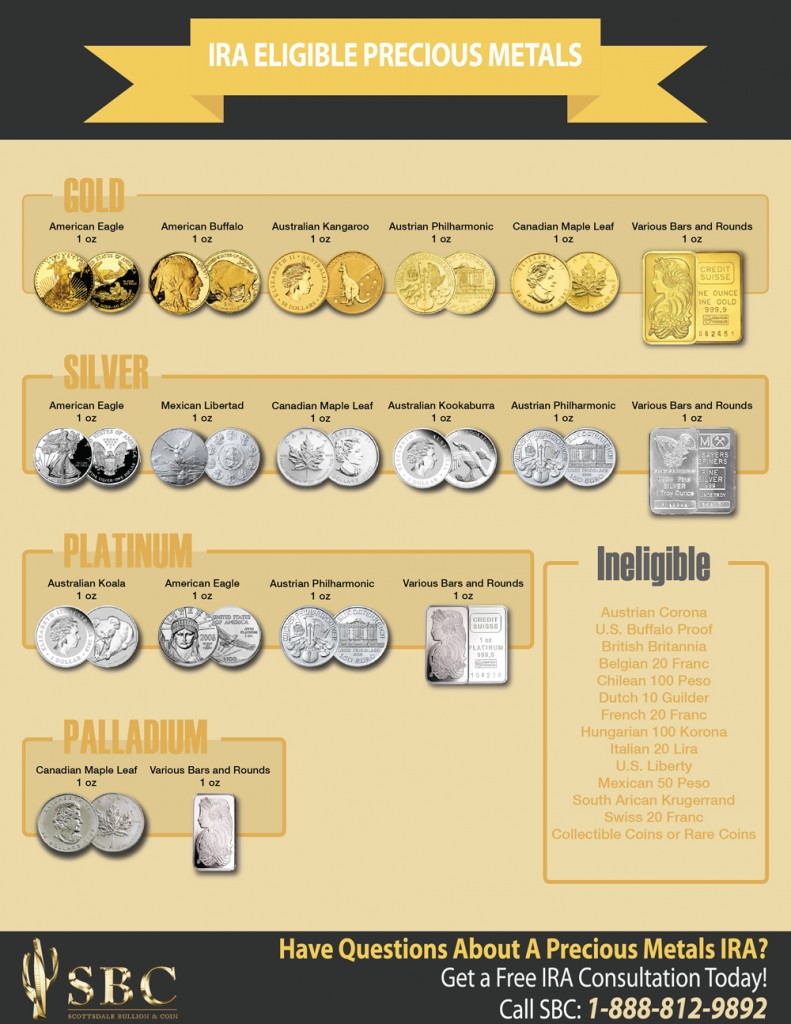
Coin collecting has been a recognized hobby for thousands of years, not only because they carry intrinsic value as currency, but also for their aesthetic beauty. Even the Roman Emperor Augustus knew the value of coins, which he would occasionally present as gifts to friends during special occasions.
Coin Collecting For Fun or Profit? Or Both?
Today’s coin market has become much more complex. Numismatists (coin experts) use a number of details to determine a coin’s value, which can vary depending on its rarity as well as the quantity of the precious metal it carries. Those who are interested in purchasing coins as an investment, then, must be careful to ensure that their getting their money’s worth.
What Are My Options?
Investment options for coins have become even more varied since the IRS first established IRAs during the 1970s, which allowed investors to add certain gold or silver coins minted by the U.S. Treasury. Precious metals IRA account holders were given additional options in 1997, such as the inclusion of platinum and palladium coins and bullion.
Follow IRS Rules For IRAs
Perhaps you may have inherited some coins and are thinking about adding them to your retirement portfolio. While your inheritance may have numismatic value to collectors, the IRS has specific rules regarding precious metals IRAs that your investment must follow in order to qualify, which is why it’s important to do extensive research first before making a purchase.
Are My Coins High Enough Quality?
For one thing, only certain types of coins are allowed in precious metals IRAs. For example, gold coins in IRA accounts have to possess a certain level of purity. Except for 22 karat United States Gold Eagles, all gold coins have to be 24 karats (99.9% pure) to be considered. Silver coins have to reach similar levels of millesimal fineness to meet IRA standards.
Are My Coins Minted?
The IRS also allows coins only from certain mints to be included in an IRA. In general, gold and silver coins minted by the U.S. Treasury are allowable, though silver dollars and smaller denominations issued before 1965 are not pure enough to meet IRA standards. Most Canadian coins are also acceptable, as well as a few other kinds such as Austrian Gold Philharmonics.
Where Am I Supposed To Store My Gold Coins?
In addition to making sure that you have the right coins there are also rules regarding IRA transactions. While you may think that your home safe is worthy enough to store your coins, the IRS prohibits personal storage arrangements. Instead, you need to find an approved depository, which is usually a federally-insured bank.
Do I Need An Outside Verifier?
Precious metals IRA account holders also have to hire a licensed custodian to manage their retirement funds. Qualifying custodians cannot be related to you, however, but must come from a licensed third party. Examples of custodial entities include banks, brokerage firms and trust companies.
What Can I Expect From A Gold Custodian?
Custodial entities often have restrictions on what kinds of investments they are willing to handle, which is why you may need to “shop around” in order to find one that suits your needs. In general, platinum, silver and gold coins in IRA accounts must be purchased by the custodian according to your directions, as they do not make investment decisions.
Know Your Stuff Before Jumping In
As you can see, coins will count toward your gold or silver IRA just as long as they follow certain rules. There are, however, other laws regarding precious metals IRA transactions, which is why it’s wise to do additional research and seek advice from professional sources such as PreciousMetalsIRA.org before adding gold and silver coins to your retirement portfolio.
